The 6th China International College Students’ ‘Internet+’ Innovation and Entrepreneurship Competition National Finals were held at South China University of Technology from November 17 to 20. Two student teams from Tongji University entered the national finals and took one gold, one silver, and three bronze medals. In the main higher education category, a Tongji teacher-student team led by SHU Qiang, a 2017 master’s degree graduate from the School of Automotive Studies, entered the top three competition as No. 1 in the preliminary round and ended up Sixth Place in the national finals, and took the Most Commercial Value Award for the project: Tongyu Automotive - Industry Leader of the Electro-mechanical Brake System (EMB). In the Youth Dream-catching Journey category, a team led by XU Haowen, a 2020 master’s degree student from the College of Architecture and Urban Planning (CAUP), won a silver medal in the national finals for their project: Intelligent Village on the Palm - Integrated Service System for Rural Industry Revitalization.
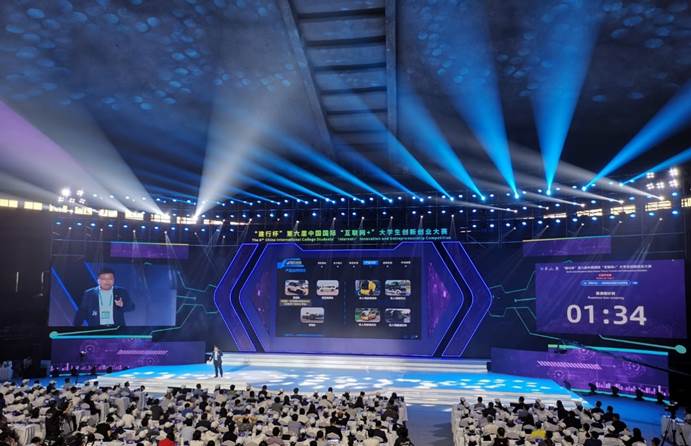
SHU Qiang’s team roadshow
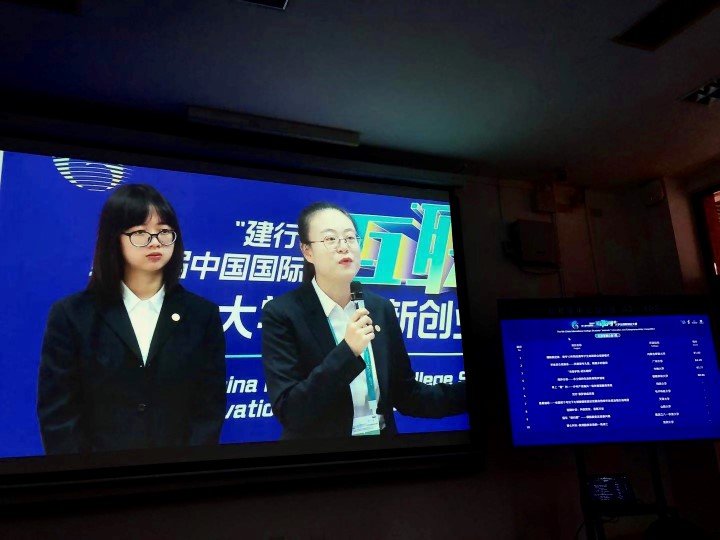
XU Haowen’s team roadshow
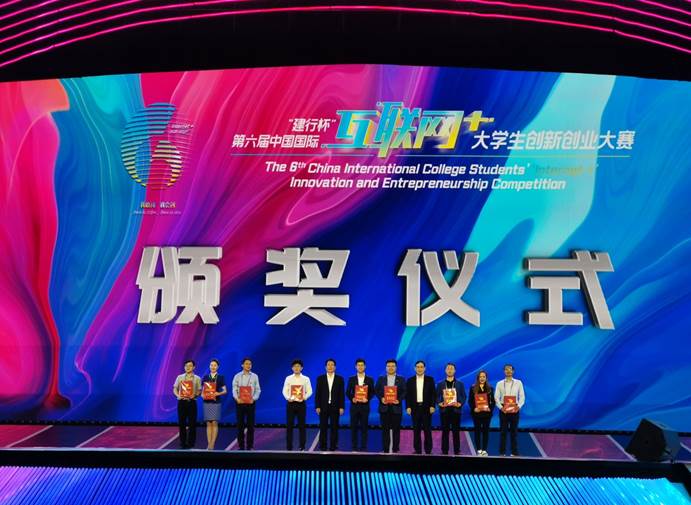
winning the Most Commercial Value Award

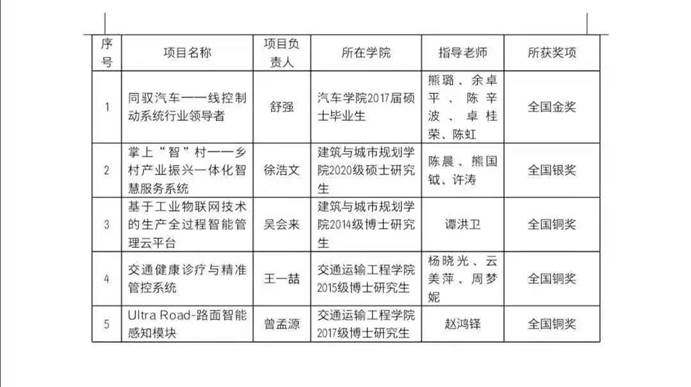
The three bronze awards projects were: IoT-based Intelligent PPM Cloud Platform (Intelligent Cloud Platform for Production Process Management Based on Industrial Internet of Things) led by 2014 doctoral student from the CAUP WU Huilai; Transportation Health Diagnosis and Precision Control System led by 2015 doctoral student from the College of Transportation Engineering (CTE) WANG Yizhe; and Ultra Road--Pavement Intelligent Perception Module led by 2017 doctoral student from the CTE ZENG Mengyuan.
The new Electro-Hydraulic Braking (EHB) System was developed in response to the new demands placed on the traditional braking systems by today’s intelligent and electric vehicles. Compared with the traditional vacuum servo braking system, the EHB system has many advantages, such as high-performance active braking, a significantly improved brake energy recovery rate, an adjustable braking feeling, a high degree of integration, robust scalability, and more, and has become a mainstream solution for the next-generation automotive braking system recognized by the industry. In September 2016, SHU Qiang led his team to establish Shanghai Tongyu Automotive to industrialize the electro-hydraulic brake system. After seven generations of prototype R & D iterations, his team mastered all the core technologies and developed the leading EHB system in China. So far, they have submitted 55 patent applications, among which 8 invention patents and 26 utility model patents were authorized. SHU Qiang’s team has won the most patents in this field in China. Tongyu Automotive has had business cooperation with more than 60 well-known vehicle manufacturers and intelligent driving companies, such as Dongfeng Nissan, Geely, JAC, King Long, ISUZU, Alibaba, and UISEE. It has more than 70 compatible models, covering passenger cars, as well as commercial, military, and self-drive vehicles. Tongyu Automotive’s EHB system is compatible to China’s military’s new combat and self-drive vehicles on disinfection, cleaning, and delivery. It participated in the prevention and control of COVID-19, building a defense line for people’s lives and health. Tongyu Automotive has made 35 various EHB experimental equipment sets with complete EHB test and detection capabilities. Additionally, it has established an advanced EHB production line with an annual capacity of 240,000 sets which is one of the few companies in the world with mass production capability of the EMB. SHU Qiang is leading Tongyu Automotive on its way to become a global leader in the chassis control technology of X-by-wire automobile.
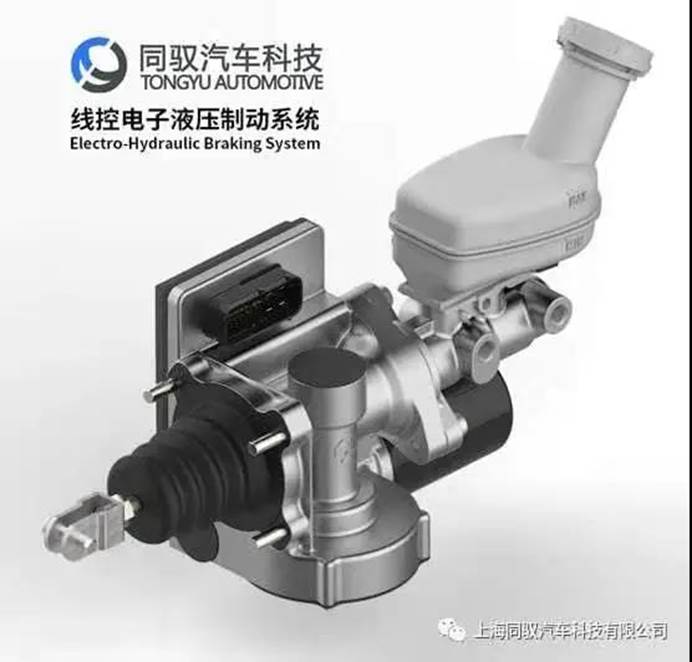
Electro-Hydraulic Braking System
Tongji’s youth embarked on a dream-catching journey by making good use of their academic knowledge to help lift poverty in villages and towns in response to Presidnet Xi Jinping’s initiatives of revitalizing the rural areas. The project team led by XU Haowen drew expertise from Tongji’s planning discipline in their exploration of rural development rules driven by local industries to address the issues of WHAT TO DO and HOW TO DO for rural industrial development. Based on their eight-year experience and research data, XU’s team build\t an Integrated Intelligent Service System for Rural Industry Revitalization known as Intelligent Village on the Palm. The system is composed of two major sections, namely, Decision Support System for Industrial Development and Application Platform for Industrial Revitalization Best Practice. They provide rural industries with complete -process and quality services. The project has won a first prize in the national Challenge Cup and reached cooperation agreements with many villages in Shanghai, Jiangsu, and Chongqing, attracting coverage in China’s central media. In the future, the project will be updated to extend its business scope and improve its operational model on its way to help revitalize the rural industry on a larger scale.
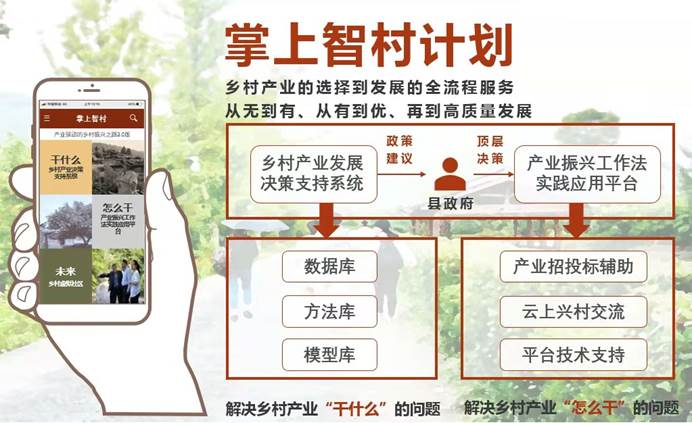
The IoT-based Intelligent PPM Cloud Platform is a product that combines intelligent control terminal equipment with a cloud management platform to provide customers with overall software and hardware solutions. The intelligent control service terminal embedded with data acquisition, analysis, and management software, processes data storage, scheduling, analysis independently, and issues the optimized control strategy to reduce the central control cluster’s computing pressure and its high dependence transmission network security significantly. The software management platform integrates the Andon, energy management system, online equipment monitoring, and the video surveillance system into a set of monitoring and management platforms greatly simplifying the supervisory tasks of the manufacturing workshop, facilitating the collaboration of the workshop supervisory systems, and ensuring the accuracy and efficiency of the workshop production management. As a result of introducing an advanced equipment fault predictive analysis system, the production line’s safety and stability have been improved significantly.

WANG Yizhe’s team
To improve urban transportation, the government needs to invest in the construction of transportation systems continuously. To avoid blind investments, we must find the root cause of the transportation system’s disease. The team headed by WANG Yizhe identified the problems through massive data mining, build\t ubiquitous connections in the transportation system, and broke through the previous paradigm of “correlation analysis” in transportation data analysis. WANG’s team used the Cause Diagnosis Reasoning Machine to analyze transportation system elements’ health and build four application scenarios, to include public transportation, expressways, urban roads, and regional transportation. The Transportation Health Diagnosis and Precise Control System can analyze the health status of transportation system elements, which not only determines whether the transportation system is running well, but also finds the crux of transportation problems such as safety, inefficiency, pollution, and more. This system makes it possible to avoid dropping into the trap of solving one problem and creating another.
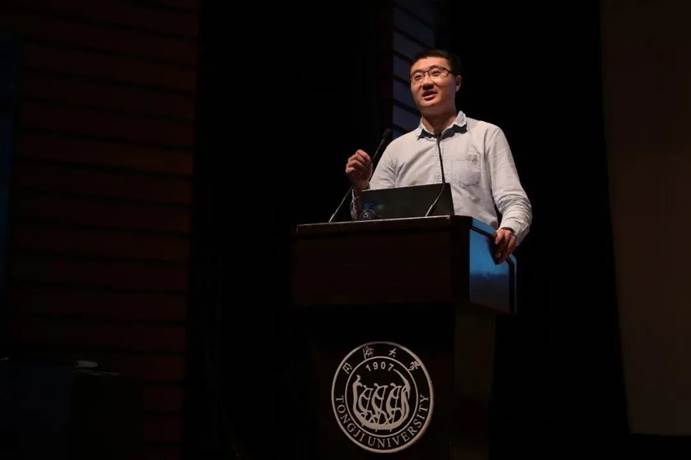
The Ultra Road--Pavement Intelligence Perception Module, driven by optical fiber sensing technology, relies on high-precision precast technology to form the pavement intelligence module structure. It weighs in the motion of vehicles by sensing pavement vibration, develops non-destructive module assembling and fast networking technology, builds innovative overload management mode of a “quick pre-check--accurate reinspection” to improve detection efficiency, alleviate traffic congestion at stations, solve the traffic safety weak point of supervising vehicle overload, and meet the demands of transformed ETC and others for a dynamic collection of vehicle information. Compared with other similar products on the market, the most significant advantage this product enjoys is that it has broken the bottleneck of the speed limit while increasing the adaptive speed by three times up to 120km/h with a 50% cost reduction and longer operation time. In 2015, the team was established and began scientific research committed to the study of pavement vibration. Over the past five years, the team has focused on technical innovation, progress making, and iterative upgrading. The product has been piloted in the Shanghai Outer Ring, Shanghai Shenjia Lake Expressway, Shanghai Longhua Airport, Chongming Chenhai Highway, Guangdong Guangzhou-Zhaoqing Expressway, and other locations covering urban roads, national and provincial trunk roads, expressways, toll stations, service areas, airports, and different application scenarios, suitable for asphalt pavement, concrete pavement, and other types of the pavement structure. At present, the total installation area of modules has exceeded 800 square meters with the total optic fiber length of more than 2,500 meters and the total monitoring time of more than 1,000 days. The product effect has been confirmed by the Shanghai Road Administration Bureau, Guangdong Zhaoqing Expressway, and other customers. The project team has settled in the National College Student Entrepreneurship Demonstration Park and has been funded by the Dream Assistance Fund. The initial income, project coverage cost, and funds generated are all entrusted to the University. In the form of a horizontal project of Tongji University, the team has signed an order of 5 Million Yuan with China Communications Construction, Shanghai Road Administration Bureau, Guangxi Communications Investment Group, and Shanxi Transportation Holdings Group, and will promote the product application jointly on the accident-prone location of the expressway and in Intelligent Logistics Park. At the same time, the team is supported by the Incubation Policy of the National Science and Technology Park of Tongji
University and will soon establish a company.
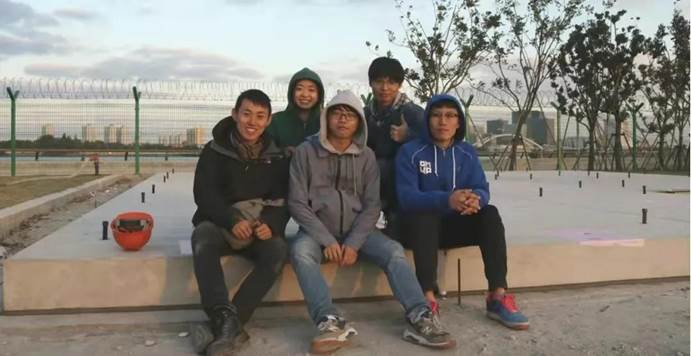
The University attached great importance to and strongly supported Tongji teams in their preparation for the competition. Tongji’s Deputy Secretary XU Jianping and Vice President LEI Xinghui attended meetings on the competition, gave their advice, and addressed problems for them. Tongji Innovation and Entrepreneurship Holdings Limited, the University Alumni Association, Undergraduate School, Graduate School, Student Office, Youth League Committee of the University, and other departments gave full support to the competition. Experts, both from inside and outside the University, were invited to form a mentor group to give guidance to all teams in project selection, project cultivation, business proposal, project presentation, and on-site defense. Since the launch of the competition in June this year, more than 20 online counseling lectures and training sessions were held. The total number of participating projects reached a record high of 717, an increase of 39% over the previous year.
China International College Students’ ‘Internet+’ Innovation and Entrepreneurship Competition, the most extensive and most influential event of its kind, serves as an important platform for deepening innovation & entrepreneurship education in China. Since the launch of the competition in June, people from the Ministry of Education, provinces related and universities made great efforts by joining hands in minimizing the pandemic impact, which helped boost students’ enthusiasm for innovation & entrepreneurship. The competition bore fruitful results in innovation, education, poverty alleviation, anti-pandemic efforts and international influence among others. With the theme of “I dare to create”, the competition attracted and 6.31 million people with 1.47 million projects from 4,186 colleges and universities from 117 counties and regions.
At present, the focus of innovation & entrepreneurship education at Tongji University is to optimize the Symbiotic Innovation and Entrepreneurship Education Ecosystem and to create an upgraded version of innovation & entrepreneurship education. The University puts in place the fundamental task of cultivating talents by virtue, and promotes the reform of management system and mechanism of innovation & entrepreneurship education. To follow the national innovation-driven development strategy and fulfill the objective of the “14th Five-Year Plan” of Tongji University, the University is dedicated to developing a new model of cultivating world-class innovative and entrepreneurial talents, producing social pillars and professional elites who can lead society and create the future, and providing Tongji’s best practice for developing innovative and entrepreneurial talents in Chinese universities.
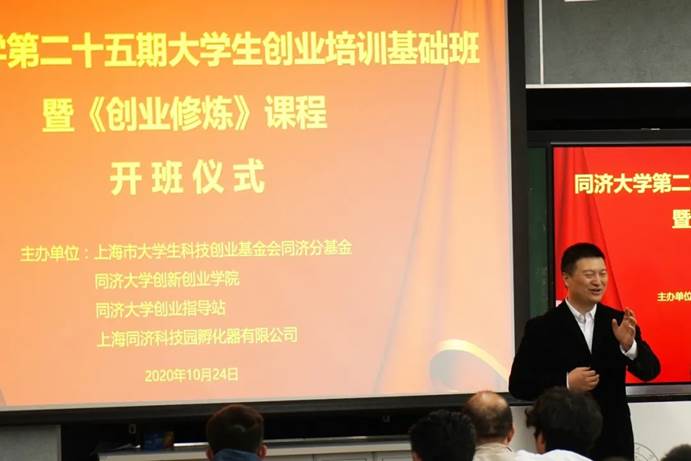
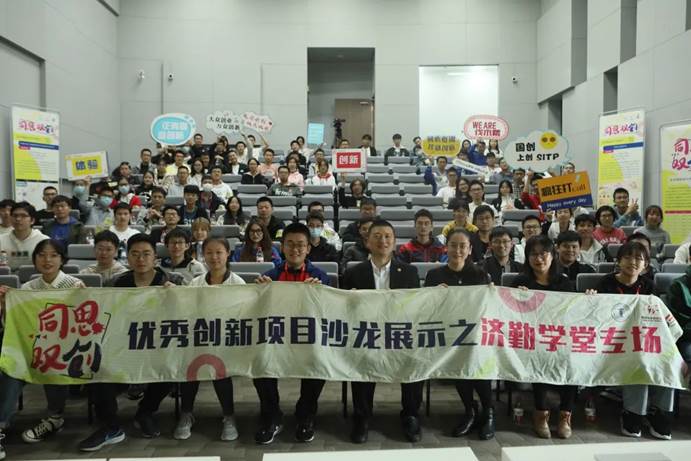
Pioneering spirit of Tongji
Tongji University deepens the construction of a symbiotic innovation & entrepreneurship education ecosystem with the university knowledge economy circle, technology transfer, and innovation & entrepreneurship talent cultivation in its core. The University gives full play to the specialized advantages of the University’s disciplines, majors, and talent cultivation to form a new quality outlook on cultivating innovative talents in higher education in the new era. It serves to deepen the construction of a cross-department, cross-discipline, and cross-platform innovation & entrepreneurship education system based on “integration of thinking and innovation, combination of specialty and innovation, combination of competition and education, and industry-university-research collaboration”. They will improve the pattern of Three-comprehensive-aspect Education and practical education to form a new paradigm for the cultivation of innovative talents in higher education in the new era. Tongji University expands international exchange and cooperation to cultivate innovative talents, boost students’ cultural agility and global leadership, and develop their international vision and global innovation & entrepreneurship ability. Facing the requirements of the intelligent and digital economies based on artificial intelligence and big data for innovative talents, we deepen the reform of the concept, content, mode, and method of innovation & entrepreneurship education, implement its “supply-side” structural reform, and make the curriculum, classroom, and learning revolutionary. Through these efforts, Tongji will strive to cultivate innovative, entrepreneurial, and creative talents needed to construct an innovation-driven country and a new generation to shoulder the mission of achieving national rejuvenation.
Source: https://news.tongji.edu.cn/info/1003/75789.htm